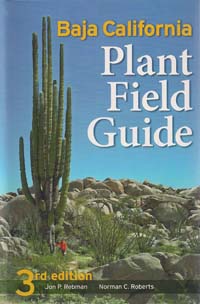In 1882 Charles Orcutt, a naturalist living in San Diego, collected his first plant specimen from Baja California. This was just eight years after the San Diego Society
of Natural History was founded. Thus began what is now the Baja California collection in the herbarium of the San Diego Natural History Museum. Today, under the direction of Dr. Jon Rebman, the collection continues to grow with
his frequent expeditions into every corner of the peninsula and surrounding islands. The SDNHM Baja collection now exceeds 48,000 mounted specimens. At this web site,
the data for all those specimens is accessible in addition to the records of another 45,000 specimens from other herbaria, most notably the Centro de Investigaciones
Biologicas del Noroeste at La Paz, BCS, and Universidad Autonoma de Baja Califorinia at Ensenada, BC. Dr. Rebman has recently published a comprehensive checklist of the
vascular plants of Baja which lists over 4,000 vouchered plant taxa, the first checklist of the area since Wiggins, 1980, which included 2,958 taxa.
What is here?
The foundation of this website is the combined collection that allows
Users to search among nearly 93,000 specimens from the SDNHM herbarium as well as six other herbaria including
the two major institutions of Baja California and Baja California Sur.
The web site presents nearly 5000 digital images of Baja California voucher specimens from the museum's collection.
Additional images from the other participating herbaria are included when a representative
SD specimen is not available. All current voucher scans are being done in high resolution which can be viewed on the
web site or downloaded directly. Over 400 high-res scans are currently available.
The web site includes over 35,000 photographs of plants and places of Baja.
Additionally, we continue to add photographs from Dr. Rebman's expeditions into
the Baja California peninsula.
Many other tools for mapping, searching geographically, exploring the checklist, historical maps, and more are available here.
Users are encouraged to Read a website overview.
|

Purchase the 3rd Edition (2012) from
SDNHM
Amazon
Barnes & Noble
|